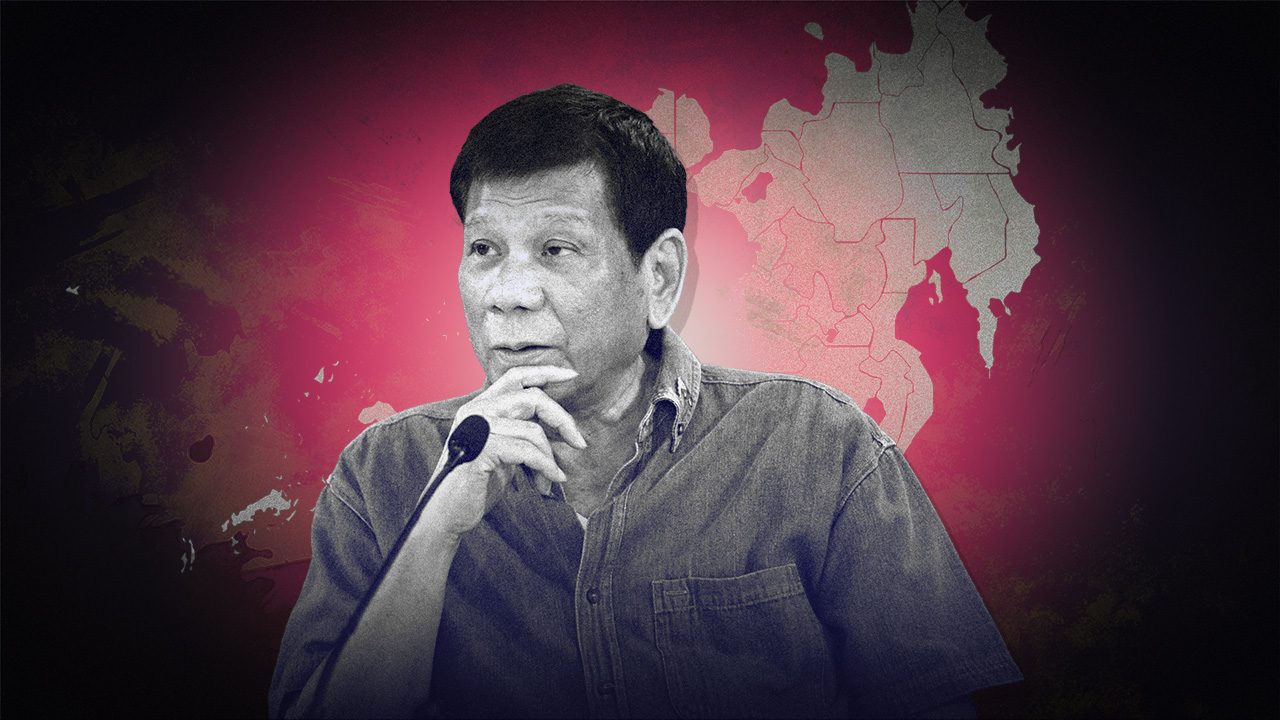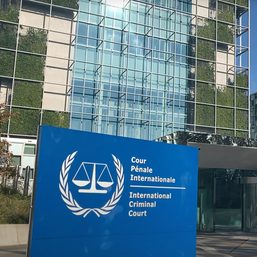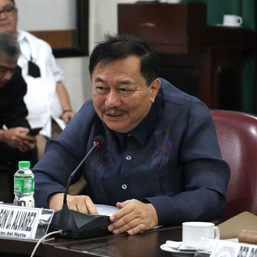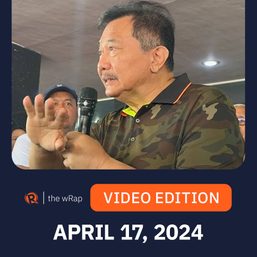SUMMARY
This is AI generated summarization, which may have errors. For context, always refer to the full article.

MANILA, Philippines – A couple of days after former president Rodrigo Duterte accused his successor Ferdinand Marcos Jr. of involvement in the illegal drug trade, the man from Davao City stepped up his rhetoric by calling for Mindanao’s independence.
“What is at stake now is our future, so we’ll just separate,” Duterte was quoted as saying on January 30. The former mayor even claimed he had asked his former House speaker – incumbent Davao del Norte 1st District Representative Pantaleon Alvarez – to gather signatures in favor of the advocacy.
The government did not take the call sitting down, decrying the proposal that has – at the same time – baffled critics due to its lack of specifics.
Rappler sums up the gigantic obstacles that advocates of Mindanao secession are facing to make that vision – if they are really serious about it – a reality.
Advocates want to emulate the path to independence of some young nations, but their lived realities are different from those of Mindanao.
In the 2006 book Secession: International Law Perspectives, professor Antonello Tancredi wrote: “International law neither prohibits nor authorizes secession, but simply acknowledges the result of de facto processes which may lead to the birth of new states.”
There is no manual on successful secessions, and separatists can only learn from the experience of other countries.
Duterte-era chief presidential legal counsel Salvador Panelo brought up the statehoods of Singapore and Timor-Leste, but the conditions that paved the way for their independence are different from the realities in Mindanao.
Singapore, for instance, did not gain independence voluntarily. It was expelled by Malaysia in 1965, due to irreconcilable differences in ideology and politics.
Timor-Leste, meanwhile, is a case that inspires Duterte, who said on February 7: “My proposal of a Mindanao secession is a legal process that will be brought to the United Nations (UN), just like what happened to Timor-Leste.”
Yes, the UN organized a referendum in Timor-Leste in 1999, the watershed vote that resulted in its independence from Indonesia. But the young nation’s journey of self-determination was bloody, and its experience does not necessarily bear strong similarities to that of Mindanao.
While there were state-sanctioned killings that triggered the Moro insurgency in the southern Philippines, Timor-Leste had to grapple with what numerous scholars believe is a genocide at the tail-end of the 20th century. The atrocities during that time prompted the rise and consolidation of pro-independence organizations, which Mindanao does not have at the moment.
The downfall of military dictator Suharto also ushered in an era of democratic reforms, and the succeeding president, B.J. Habibie, allowed the people of Timor-Leste to pick either full independence from Indonesia or special autonomy.
The Philippine government has spoken strongly against the call for an independent Mindanao.
It seems implausible that the Marcos administration would one day just let political foes in Mindanao do what they want, such as enabling a referendum on secession. After all, the government has already been adamant about quashing Duterte’s out-of-left-field proposal that made national headlines.
Issuing their own statements to reject the former president’s call were the justice and interior departments, as well as National Security Adviser Eduardo Año and Presidential Adviser on the Peace Process Carlito Galvez Jr. – both Marcos appointees who were once part of the Duterte Cabinet.
“The national government will not hesitate to use its authority and forces to quell and stop any and all attempts to dismember the Republic,” Año warned on February 4. “Any attempt to secede any part of the Philippines will be met by the government with resolute force.”
President Marcos has also urged the proponents of a separate Mindanao to drop their advocacy.
“The new call for a separate Mindanao is doomed to fail, for it is anchored on a false premise, not to mention a sheer constitutional travesty,” he said on February 8.
The 1987 Constitution does not entertain the concept of secession.
Panelo has rebuked Marcos, insisting that espousing the idea of secession is part of freedom of speech guaranteed by the 1987 Constitution.
“Secession is anchored on the principle that the people have the right to self-determination. They have the right to choose the kind of government they want, to choose the officials who will govern them and to determine their future,” Panelo said on February 11.
Still, the present charter does not entertain secessionist movements.
The first two articles of the Constitution put a premium on the country’s territorial integrity, saying that the Armed Forces of the Philippines must work “to secure the sovereignty of the State and the integrity of the national territory.”
Marcos has already made clear how he interprets the Constitution in light of secession calls.
“Our Constitution calls for a united, undivided country. It calls for an eternal cohesion. For this reason, unlike other Constitutions, there is nothing in ours that allows the breaking up of this union, such as an exit provision,” he said.
Duterte does not have the support of the Bangsamoro leadership nor key political figures from Mindanao.
There were calls in the past for Mindanao to separate from the rest of the Philippines, but “they never really got mainstream,” according to former presidential adviser on the peace process Ging Deles.
“What became a real move towards independence or secession was the Bangsamoro,” she said in Rappler’s panel discussion on Mindanao independence on February 9. “It was not a call for an independent Mindanao. It was a call of a specific area that was united in teachers of culture, history, and tradition that were being neglected.”
Duterte, however, cannot convince even the leadership of the Bangsamoro Autonomous Region in Muslim Mindanao (BARMM) to join his cause.
“As chief minister of the Bangsamoro government, I stand firmly on adhering to the faithful implementation of the provisions of the Comprehensive Agreement on the Bangsamoro towards the right to self-determination,” Bangsamoro Chief Minister Ahod Ebrahim said on February 2, referring to the landmark 2014 peace deal that resulted in Islamic separatists letting go of their firearms.
Other leaders from Mindanao have opposed Duterte’s call, including Senate President Juan Miguel Zubiri, Senate Minority Leader Aquilino “Koko” Pimentel III, and House Majority Leader Mannix Dalipe.

It appears that advocates of Mindanao secession have yet to fully organize themselves.
Weeks since Duterte’s statement, there are little indications that would suggest there is truly a “movement” or well-oiled machine to concretize the idea. A signature campaign has also not begun.
When asked about the blueprint of their ambition, Alvarez acknowledged that they are still at the first step of what he said is a three-stage process.
“First is awareness. The people in Mindanao need to know about this movement seeking to separate Mindanao from the rest of the Philippines. The next stage would be acceptance. We have to answer the questions of what and why so the public will understand. After that, we will wait for the right timing, the ‘when,'” he said during Rappler’s panel discussion.
Alvarez insisted their call for Mindanao secession is not personal, but former presidential political adviser Ronald Llamas disagreed.
Llamas suspects that the proposal ultimately stems from the long shadow cast by the possibility of the Marcos administration allowing the International Criminal Court to arrest Duterte over his bloody drug war that resulted in thousands dead.
“My belief is that the call for secession is basically personal. It’s the fear of the ICC,” he said. – Rappler.com
Add a comment
How does this make you feel?

![[In This Economy] Marcos’ POGO ban is popular, but will it work?](https://www.rappler.com/tachyon/2024/07/thought-leaders-marcos-pogo-ban.jpg?resize=257%2C257&crop=255px%2C0px%2C720px%2C720px)
![[Rappler Investigates] POGOs no-go as Typhoon Carina exits](https://www.rappler.com/tachyon/2024/07/newsletter-graphics-carina-pogo.jpg?resize=257%2C257&crop=424px%2C0px%2C1080px%2C1080px)





![[Vantage Point] The PDEA leaks](https://www.rappler.com/tachyon/2024/05/vantage-point-pdea-probe.jpg?resize=257%2C257&crop=255px%2C0px%2C720px%2C720px)
![[Edgewise] How Duterte can elude ICC arrest](https://www.rappler.com/tachyon/2024/05/thought-leaders-How-Duterte-elude-icc-arrest.jpg?resize=257%2C257&crop=272px%2C0px%2C720px%2C720px)



![[EDITORIAL] Ang low-intensity warfare ni Marcos kung saan attack dog na ang First Lady](https://www.rappler.com/tachyon/2024/04/animated-liza-marcos-sara-duterte-feud-carousel.jpg?resize=257%2C257&crop=294px%2C0px%2C720px%2C720px)

There are no comments yet. Add your comment to start the conversation.